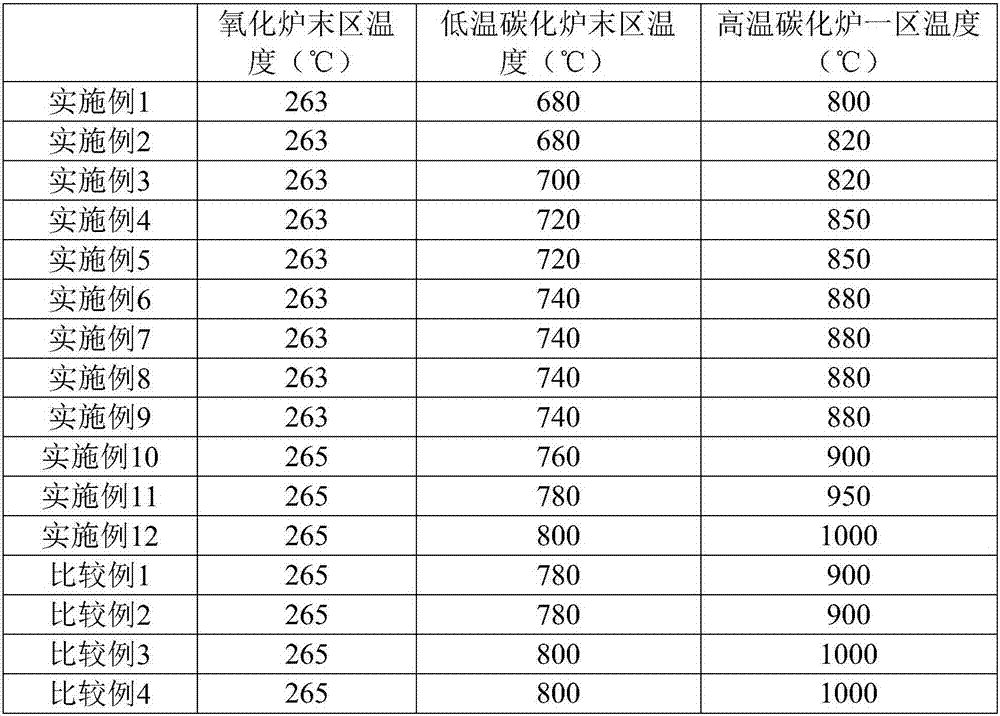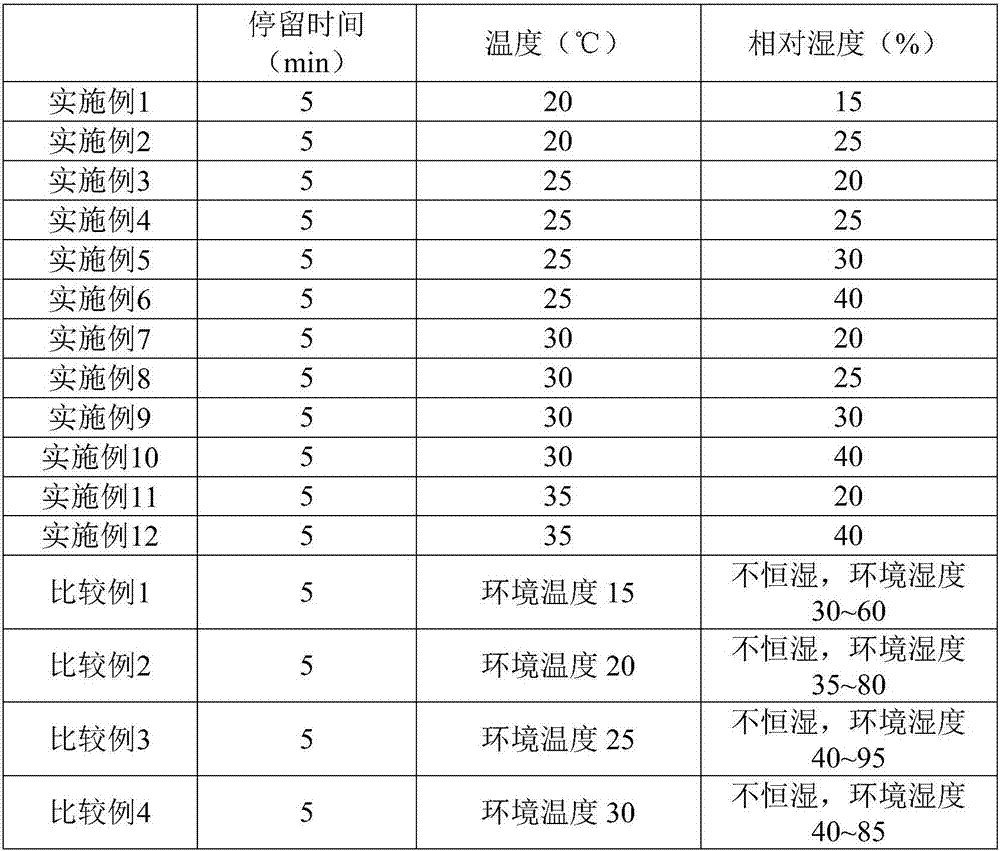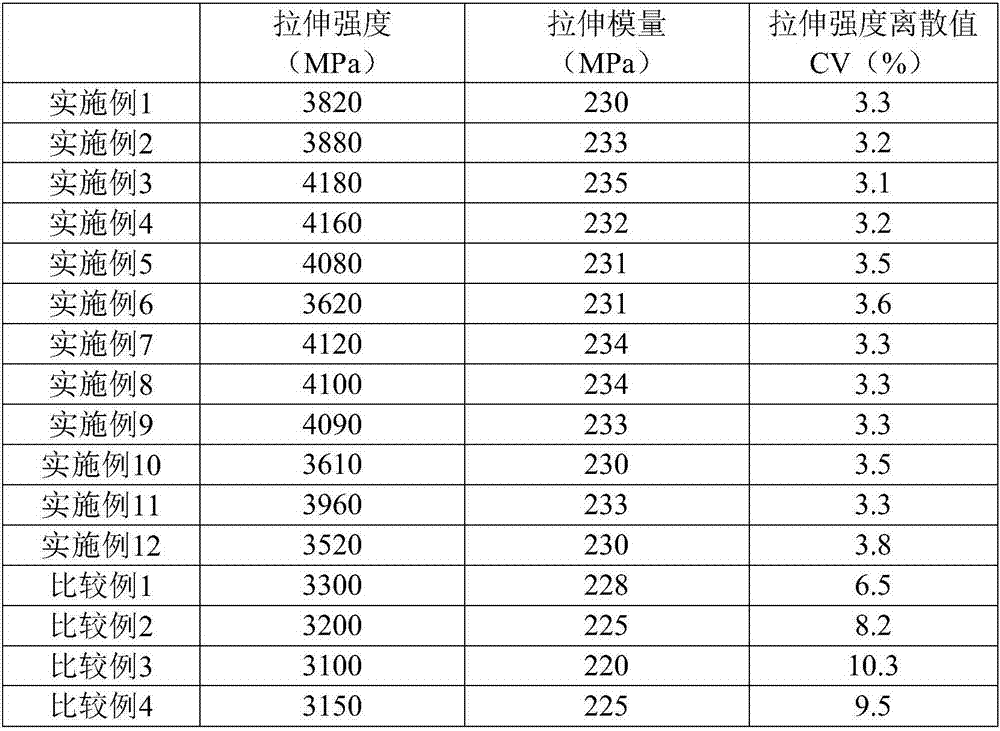Method for improving strength of polyacrylonitrile-based carbon fibers
A polyacrylonitrile-based carbon fiber, strength technology, applied in the chemical characteristics of fibers, textiles and papermaking, etc., can solve the problem of no technical reports, and achieve the effect of reducing water absorption, simple control, and improving tensile elastic modulus
- Summary
- Abstract
- Description
- Claims
- Application Information
AI Technical Summary
Problems solved by technology
Method used
Image
Examples
Embodiment 1~12
[0031] Carry out the preparation of carbon fiber according to the following steps:
[0032] 1) After warping, the polyacrylonitrile raw silk enters the 1# oxidation furnace with a temperature of 225 and 232°C at 5.5m / min and a certain tension in sequence (225 and 232°C are the control temperatures of the two temperature zones of the 1# furnace respectively, The same below), then enter the 2# oxidation furnace that the temperature is 238,245°C, and finally enter the 3# oxidation furnace that the temperature is 253,263°C, the residence time in the furnace is 95min; wherein the oxidation furnace end zone temperature of each embodiment See Table 2.
[0033] 2) The pre-oxidized wire coming out of the 3# oxidation furnace is pulled by the exit pulling roller into the first constant temperature and humidity chamber. Compressed air with a pressure of 0.6 MPa and a dew point of -40°C is introduced into the room, and the pressure in the constant temperature and humidity room is control...
PUM
 Login to View More
Login to View More Abstract
Description
Claims
Application Information
 Login to View More
Login to View More - R&D
- Intellectual Property
- Life Sciences
- Materials
- Tech Scout
- Unparalleled Data Quality
- Higher Quality Content
- 60% Fewer Hallucinations
Browse by: Latest US Patents, China's latest patents, Technical Efficacy Thesaurus, Application Domain, Technology Topic, Popular Technical Reports.
© 2025 PatSnap. All rights reserved.Legal|Privacy policy|Modern Slavery Act Transparency Statement|Sitemap|About US| Contact US: help@patsnap.com



